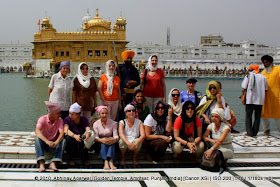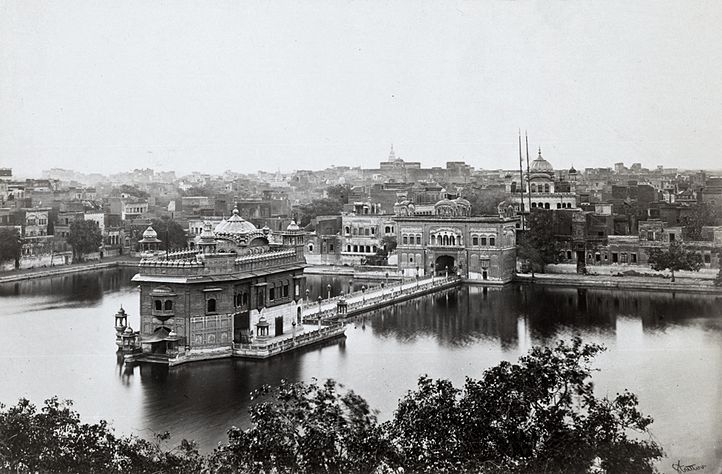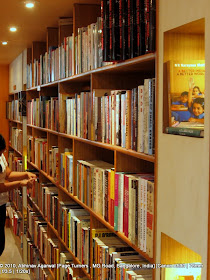

 The End of the Free Market: Who Wins the War Between States and Corporations?
The End of the Free Market: Who Wins the War Between States and Corporations?
Free markets deserve a more cogently argued and better researched defense.
Free markets deserve a more balanced, a better researched, and a more cogently argued defense than is offered up in this book. The book reads at times like a rambling rhapsody to free markets, punctuated by paeans to western private enterprise, underlined with often slipshod, inaccurate research. The middle part of the book feel like filler - perfunctory notes on companies and economies, which while useful at times, does not seem to cohere well into the narrative the author seems to be building - while the beginning only flatters to deceive. This would have been a middling though intriguing article; extended into a book it can be skipped in its entirety.
The beginning of the book grabs your attention. A question posed by China's Vice Foreign Minister, He Yafei:
"Now that the free market has failed," he asked, "what do you think is the proper role for the state in the economy?" [page 1]
demands your attention. This question is provocative, demands serious attention, a reasoned defense, and a balanced set of arguments. Unlike a few years ago, when this question could be dismissed as the usual propagandist bombast of a communist regime, the global financial meltdown of the past few years has meant that a more vigorous, a more reasoned, and a well-thought response is required. This book, sadly, fails to do that.
A fundamental underlying premise of the book is the attempt to delineate the form and role of state capitalism versus free-market enterprise. This is probably a crucial distinction that need to be clarified to the general public. The book however ties itself in all sorts of knots of logic in trying to make that distinction.
Let's look at one example of hastily (poorly maybe?) conducted research.
National champions are companies that remain in private hands (though governments sometimes hold a large minority stake) but rely on aggressive material support from the state to develop a commanding position in a domestic economy and its export markets. [page 67]
A fairly sweeping definition is penned here. The author seems to realize that the same definition could be applied to some private corporations in the US and in Western Europe. So a hasty distinction is attempted thus:
There are plenty of large U.S.- and Europe-based companies that become global players at least in part with support from their governments. ... But state capitalists create these national champions to build a reliable competitive advantage both at home and abroad, primarily for political reasons. [page 67]
Hmm... pretty tenuous. Almost every country has examples of what the author would define as "national champions". Boeing is one prime example - a company that has aggressive material support from the US government (in the form of domestic military contracts for instance). The Airbus consortium is the parallel example in Europe. No one would deny that each company benefits from political largesse precisely for the reasons that the author articulates in the paragraph above.
Some emerging market-based national champions have expanded their international clout by buying up companies based in developed countries. ... India's Tata Group has become the country's largest corporation, partly through acquisition of iconic Western brands like Britain's Tetely Tea, Jaguar, Land Rover, and Corus (formerly British Steel). Tata now operates across multiple industrial sectors in more than eighty countries. [page 69]
Ok - so this is, just, complete rubbish.
Why? Let's get the obvious error out of the way. The
Tata Group is not a corporation - it is at best a holding company for several individual corporations.
Tata Motors,
Tata Steel,
Tata Consultancy Services,
Titan, etc... are all Tata Group companies. None is India's largest corporation. That distinction goes to
Reliance Industries, per a Fortune Global 1000 ranking (
Wikipedia link,
Fortune magazine link).
Secondly, for several decades, the Tata group was seen as deprived of political patronage. Patronage that people accused the Birla Group (
Wikipedia page) for much of the post-Independence decades, and later the Reliance group in the 1980s of profiting from. The Tatas on the other hand were seen as languishing as an honest but only mildly successful conglomerate because they insisted on doing things the honest way - often finding themselves at the receiving end of the infamous "
license raj".
Thirdly, for anyone who claims to be writing with any kind of objectivity to claim, directly or through convoluted insinuations like Bremmer, that the Tata group has served to further Indian politicians' agendas is culpable of abject ignorance at best. It has been ranked as one of the most respected companies in the world by a Financial Times / PriceWaterhouseCoopers study in 2004 (
"Financial Times / PricewaterhouseCoopers World's Most Respected Companies Survey 2004").
Plucking names - popular and widely known names at that - out of thin air and besmirching them with innuendo is not going to build credibility.
One other issue with the book is how it labels free speech in communist and socialist countries as propaganda, while the same when practiced elsewhere, in free-market economies, is termed free-speech. A definition based on convenience.
The book talks about "conflicts of interest" being more obvious in places like Russia.
In Russia, conflicts of interest are more obvious. That Viktor Zubkov moved from prime minister to chairman of Gazprom, Russia's gas monopoly, when Dmitry Medvedev left Grazprom to become Russia's president reveals all we need to know about government control of an internationally powerful state-owned company. [page 154]
Very true. Insidious links between the government and companies is all too well-known in communist regimes like Russia and elsewhere. But then, couldn't one make the same argument to the US, where Robert Rubin served as the US Treasury Secretary. Before that he spent 26 years at Goldman Sachs, and after his stint as Treasury Secretary, served as Chairman of Citigroup. Or Dick Cheney, ex Vice-President of the US, who served as Chairman and CEO of Halliburton, "
a Fortune 500 company and market leader in the energy sector". The author skips explaining the distinction between these similarities. What should be obvious to all is that there has always been what many would call an unholy alliance between politics and business.
Ultimately, while the book is useful in bits and pieces, it falls far short of what a good defense of free markets should be. In these uncertain times when the infallibility of free markets is in doubt, it is important to come up with a balanced and reasoned treatise. This is not it.
Saving Capitalism from the Capitalists: How Open Financial Markets Challenge the Establishment and Spread Prosperity to Rich and Poor Alike
is a highly recommended book.
Ian Bremmer (Wikipedia)
The End of the Free Market - Ian Bremmer - Penguin Group (USA)
© 2010, Abhinav Agarwal. All rights reserved.
 , by Roger Lowenstein
, by Roger Lowenstein















































